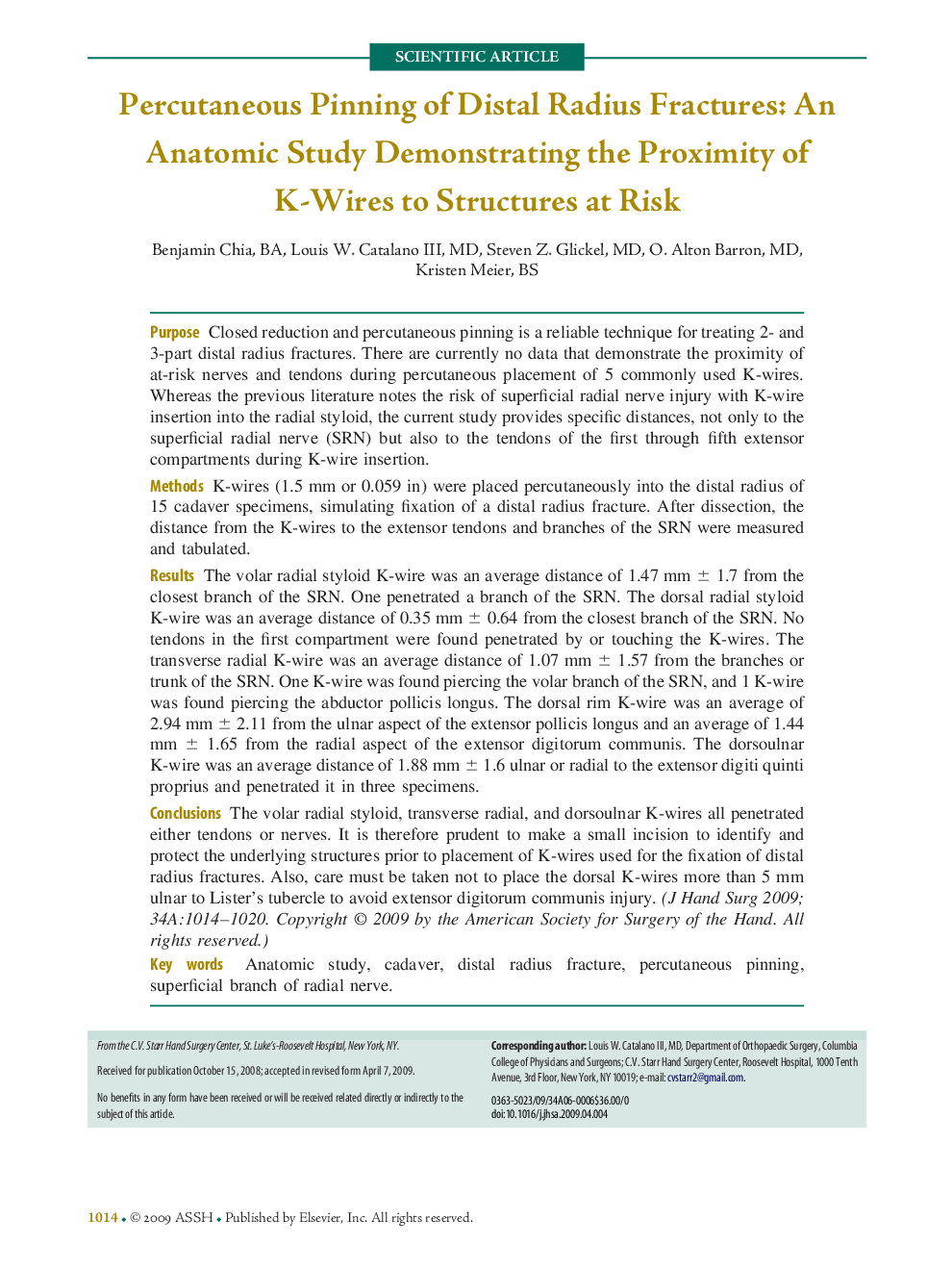| کد مقاله | کد نشریه | سال انتشار | مقاله انگلیسی | نسخه تمام متن |
|---|---|---|---|---|
| 4068493 | 1604432 | 2009 | 7 صفحه PDF | دانلود رایگان |

PurposeClosed reduction and percutaneous pinning is a reliable technique for treating 2- and 3-part distal radius fractures. There are currently no data that demonstrate the proximity of at-risk nerves and tendons during percutaneous placement of 5 commonly used K-wires. Whereas the previous literature notes the risk of superficial radial nerve injury with K-wire insertion into the radial styloid, the current study provides specific distances, not only to the superficial radial nerve (SRN) but also to the tendons of the first through fifth extensor compartments during K-wire insertion.MethodsK-wires (1.5 mm or 0.059 in) were placed percutaneously into the distal radius of 15 cadaver specimens, simulating fixation of a distal radius fracture. After dissection, the distance from the K-wires to the extensor tendons and branches of the SRN were measured and tabulated.ResultsThe volar radial styloid K-wire was an average distance of 1.47 mm ± 1.7 from the closest branch of the SRN. One penetrated a branch of the SRN. The dorsal radial styloid K-wire was an average distance of 0.35 mm ± 0.64 from the closest branch of the SRN. No tendons in the first compartment were found penetrated by or touching the K-wires. The transverse radial K-wire was an average distance of 1.07 mm ± 1.57 from the branches or trunk of the SRN. One K-wire was found piercing the volar branch of the SRN, and 1 K-wire was found piercing the abductor pollicis longus. The dorsal rim K-wire was an average of 2.94 mm ± 2.11 from the ulnar aspect of the extensor pollicis longus and an average of 1.44 mm ± 1.65 from the radial aspect of the extensor digitorum communis. The dorsoulnar K-wire was an average distance of 1.88 mm ± 1.6 ulnar or radial to the extensor digiti quinti proprius and penetrated it in three specimens.ConclusionsThe volar radial styloid, transverse radial, and dorsoulnar K-wires all penetrated either tendons or nerves. It is therefore prudent to make a small incision to identify and protect the underlying structures prior to placement of K-wires used for the fixation of distal radius fractures. Also, care must be taken not to place the dorsal K-wires more than 5 mm ulnar to Lister's tubercle to avoid extensor digitorum communis injury.
Journal: The Journal of Hand Surgery - Volume 34, Issue 6, July–August 2009, Pages 1014–1020